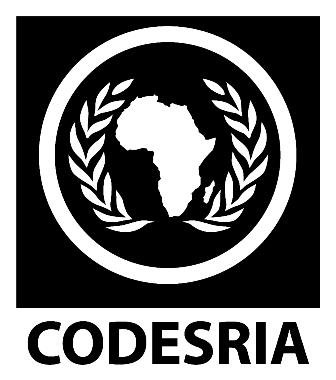ANALYSE DE L’IMPACT ECONOMIQUE DE L’ENSEMENCEMENT DES NUAGES DANS LA REGION DU NAKAMBE (BURKINA FASO)
Keywords:
IMPACT ECONOMIC, CLOUDS, NAKAMBE, BURKINA FASOSynopsis
Nowadays, the Burkina Faso as several countries in the world, undergo with strong hit the effects of climatic changes at different degrees. One of the most facts observed is the change of the amount of rain and his distribution in space for countries like Burkina Faso. This is showed by periods more arid with desert advance.
In face of this situation, national authorities have chosen to have recourse to cloud seeding as strategy to get more water. This choice of government was end in 2005 by the establishment of a permanent program. Before this, there was an operational phase in 1998 followed by an experimental phase from 1999 to 2004.
The study of this practice use allowed us to know that it was also used at United States, in Latin America, in China and more other countries for economics purposes. The results obtained by these countries were positive so much for agriculture crops in United States as energetic plan in Latin America. Globally, the recourse to this practice is a technology innovation which met a success where it was implemented.
But, for Burkina Faso, this method proved to be questionable for many citizens about is potential economic cost-effectiveness. This is why this research is focused on four major’s axes that are: agriculture, fishing, hydroelectricity and forest with their respective results. In add, for social aspect analyses of supplying water issue were realized.
The checking of these issues was made empirically by econometrics estimations with analyses based on the productivity change. This method allowed bringing out interesting results between two periods: the first one without implementation of the technology of cloud seeding and the second one with the implementation. For agricultural field, the results confirmed positives effects for maize and millet but the effect is negative for sorghum.
Concerning energetic domain, the test also revealed a positive effect on hydroelectricity production. About fishery, the estimations have showed a negative effect on captured volume. Relative to the vegetal cover, we have noticed an improvement of wood productivity because of the cloud seeding.
On the whole, we can tell that negatives and positives effects recorded were weak widths, especially the negatives effects.
At this level, analyses have permitted to conclude that results are globally positives but not with an important width than the capital invested. This is why we can tell according to the neoclassic vision, where funds must be cost-effective, that the program is not profitable but profitable in the Keynesian vision. In extension of this comment in taking account of the supplying water, even in the neoclassic vision, the cloud seeding program is cost-effective.
All things considered, with the health quality justified till now and important financials to invest, high enterprises which have greats interest at stake have to support financially this kind of program in developing countries.
Downloads
References
CHANGNON S. & HOLLINGER S.E. 1992, «The potential use of summer rainfall enhancement in Illinois: a field experiment to define responses of crop yields to increased rainfall», Journal of Applied Meteorology, Kansas, USA.
CNRS, 2006, « 5défis pour la biodiversité » Centre National de la Recherche Scientifique France le journal;/ N° 196- Mai 2006/Biodiversité, Paris, France.
DARBY M. & KARNI E., (1973), « Free competition and the optimal amount of fraud », Journal of Law and Economics, 16, pp. 67-88.
DAKOTA AGRICULTURAL DEPARTMENT et al., 1973, «Effects of Additional Precipitation on Agricultural Production, the Environment, the Economy and Human Society in South Dakota», South Dakota Agricultural Experiment Station, Final Report, June 30, Denver, USA.
FAO/DFID, 2006, Organisation des Nations Unies pour l’Alimentation et l’Agriculture : « Evaluation de la contribution du secteur des pêches à l’économie nationale en Afrique de l’Ouest et du Centre », programme pour des moyens d’existence durables dans la pêche (PMEDE/RT), Rome, Italie.
FIDA, Novembre 2008, « Le changement climatique : un enjeu pour le développement », Fonds International de Développement Agricole, Rome, Italie.
GIZ, 2010, « water loss reduction, Eschborn /Germany ». Coopération Internationale Allemande.
GARCIA P., CHANGNON S. & PINAR M. 1989, «Economic Effects of precipitation enhancement in the Corn Belt», Climate and Meteorology Section, Illinois State Water Survey, Champaign, Illinois, Washington DC, USA.






